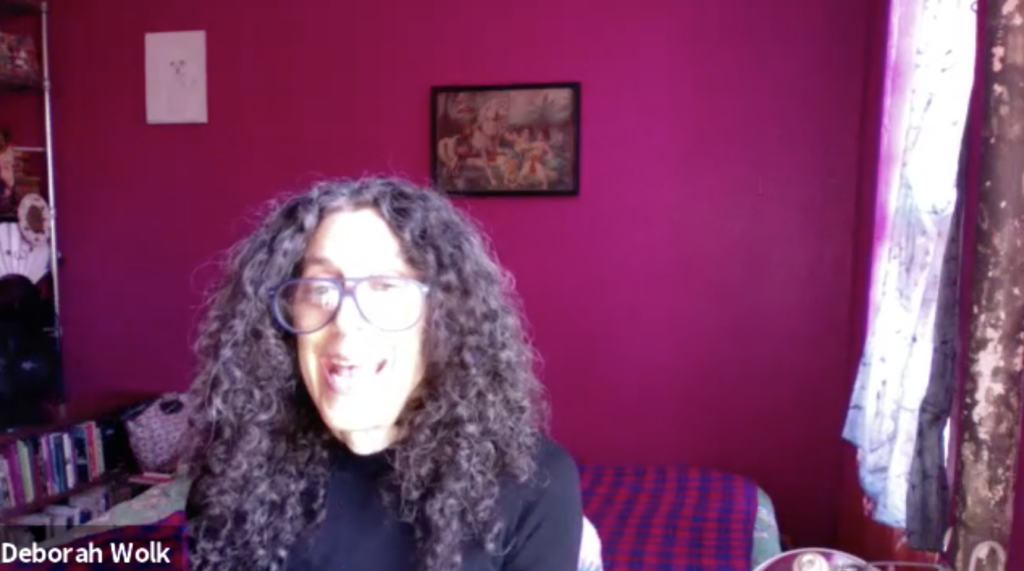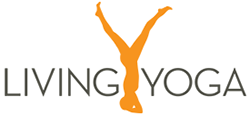Interview w/Deborah Wolk on Yoga for Scoliosis and Back Care

Deborah Wolk talks about Yoga for Scoliosis and Back Care and her upcoming workshop at Living Yoga.
“Yoga, in the way that I teach it, creates awareness about the structural issues that confront individuals with scoliosis and back issues as well as helping discern between sensation, including strong sensations and pain. I find that people need to be empowered by knowledge of themselves as they explore movement and sensory awareness so they can address issues that come up in their bodies on their own terms instead of having their fate decided by doctors, chiros etc. so they can work in collaboration with others, including their own yoga teachers.
When you practice yoga with alignment and external alignment cues and props (like walls, mats, chairs, blocks etc. you can begin to see where their sense of where you are is off and can retrain the nervous system to find your way back to center. In the center there is no pain.
2) what people can expect in the upcoming workshop related to 3 topics.
Friday, Oct 15th, 6pm-8pm
Experiential Anatomy:
Spinal Anatomy
Anatomy of Scoliosis and other Back Conditions
The Friday evening Experiential Anatomy class is the best way to prepare for the workshops on Saturday and Sunday as it gives a great background for understanding the terms and ideas that will be presented.
Experiential means that instead of memorizing names of bones and muscles, as you look at pictures and listen to the lecture, you will also be palpating (touching) your own bones and muscles so that you understand internally where things are. This is different than the way people in the medical field learn anatomy so the effect is that when you are practicing yoga you can feel the places we are talking about.
For instance you’ll be learning about a part of the vertebra called the spinous process, and you can easily feel many of these on the back of your spine through touch. As you learn the different segments of the spine (Cervical, thoracic, lumbar, sacral, coccyx) you’ll be able to discern where these segments are by seeing, touching and learning about how these vertebrae are shaped in the areas where they cross over. And you’ll be able to understand how your spine and other’s differ from the pictures in the anatomy book.
When we get into the pathology of back care and scoliosis you’ll see how things that you’ve felt that feel “wrong” fit into certain dynamics that are very common amongst many people. Knowing these dynamics will help you address these issues and pain when you practice yoga.
Many people are intimidated by anatomy. I think one of my greatest strengths as a teacher is making anatomy digestible and interesting even for the student completely unfamiliar with human anatomy or who is normally bored with it.
Saturday, Oct 16th, 10am-12pm and 2pm-4pm
Yoga with Inversions
Back Care and Scoliosis: Upside Down and Lifted up!
This workshop will address the safest ways to turn upside down!! We’ll focus on Full Arm Balance (Adhomukha Vrksasana) Headstand (sirsasana) and Shoulderstand (sarvangasana)
I will introduce step by step techniques to help you approach these poses with the strength you need to practice them safely. Rest assured that I will not be pushing anyone to achieve the full pose if it’s not appropriate, instead we’ll look for ways to practice that will give the same or similar benefits for your body or back issues. For instance, people with scoliosis have a lot of issues with Sarvangasana. I actually think the issues with sarvangasana are more challenging than those for Sirsasana because of the neck position. People with scoliosis often have very flattened cervical spines that push their heads forward and they look downward. So there are ways to prop sarvangasana so the “jalandara bandha” is less extreme or even reversed that is much better for the scoliotic spine. For instance a bolster under the neck/shoulders in chair sarvangasana.
Sirsasana, which so many people are frightened of, is actually so useful for spinal problems. I know it’s a big factor in keeping my scoliosis from progressing and that is why I called the class Upside Down and Lifted Up! Because you have to use the strength you need to really lift the spine in Sirsasana to keep the weight off the neck. Even when you are hanging from the ropes you need to do this. That strengthens the two sides of the spine against gravity and after regular practice you’ll find that your spine is naturally lifted up and you can maintain space in your scoliotic concavities or the space between the ribs and pelvis which sinks sooo much with aging. But most students with scoliosis are not ready for sirsa right away. I practiced it right away, with my crooked spine on my crooked EV floor and really screwed up my neck. I will show a number of different poses and exercises that will both strengthen the spine, traction the neck and stimulate the skull so that students can build strength, find alignment and gain the benefits of the king of the poses!!
Sunday, Oct 17th, 1-4pm
Scoliosis: Yoga to support the Heart and Lungs
First we will be locating the heart and lungs in the body. With certain poses like adho mukha virasana and anantasana we will learn how to breathe into the areas where the lungs may be more compressed. Also the Diaphragm gets “twisted” especially with thoraco-lumbar curves. This breathwork will be used throughout practice: the lungs helping to derotate curves, find balance and centering between the right and left sides.
We will then focus on the heart. Some poses that stretch and support the heart are front body extensions. These are often thought of as contraindicated for scoliosis but I’ll guide you to just the amount of “backbend” that will allow the heart to stretch and elongate and change your mood from yoga practice. Scoliosis can give us a feeling of sinking that depresses us.
And lastly we will be using some of these actions to help us with pranayama. I have a way of teaching pranayama which is very specific to scoliosis. It helps the student find the internal pathways of the scoliosis and move away from the superficial, visual and disturbing outer sensations that so many of us get caught up in and move inward to find our own spiral pathway that leads us to our inner line and our center.”
